
MENUMENU
TALK TO AN EXPERT
Special Hours: 7AM – 6PM PST
TALK TO AN EXPERT
Special Hours: 7AM – 6PM PST
There’s been a tremendous boom in off-grid solar systems in recent years. The off-grid solar sector is a whopping $1.75 billion annual market with over 420 million users. This industry shows no signs of slowing down anytime soon.
Whether people are looking to eliminate their power bill or avoid weather blackouts, an off-grid solar system is a great answer. If you’re looking to join the millions of people embracing solar energy, it will be helpful for you to understand what the major components of these systems are. Let’s take a closer look!
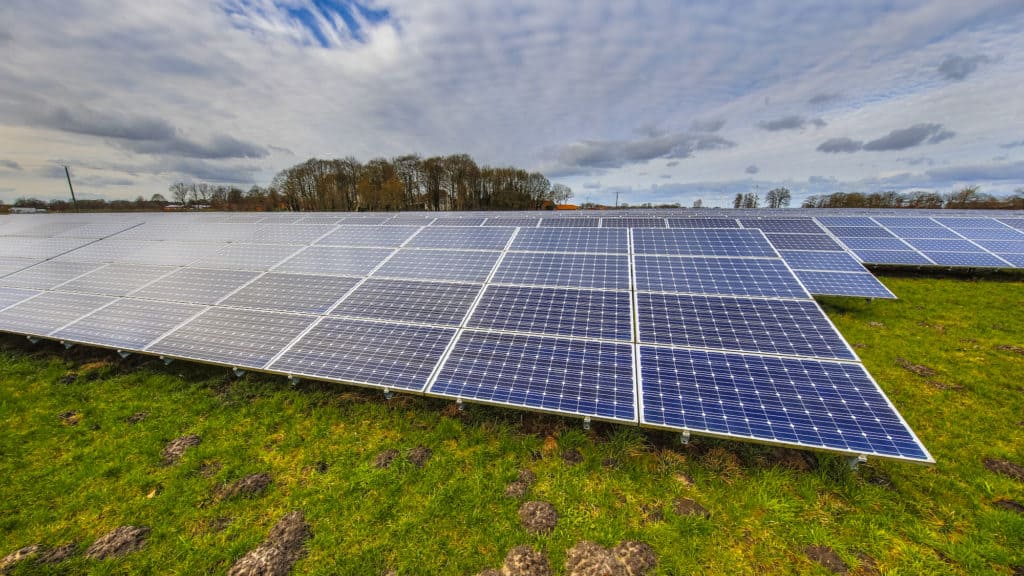
An off-grid solar system uses energy from the sun to meet all of your power needs without connecting to the power grid.
Off-grid solar systems are becoming increasingly popular for those looking to minimize their environmental impact and reduce monthly expenses. They’re also an excellent option for RVers and those looking to camp or adventure outside of established campgrounds. Boaters enjoy having reliable power when their out on the water and disconnected from shore power. It can be an entirely new way to live a life less dependent on others.
→ Learn more about how to live off the grid: 5 Biggest Challenges of Living Off The Grid
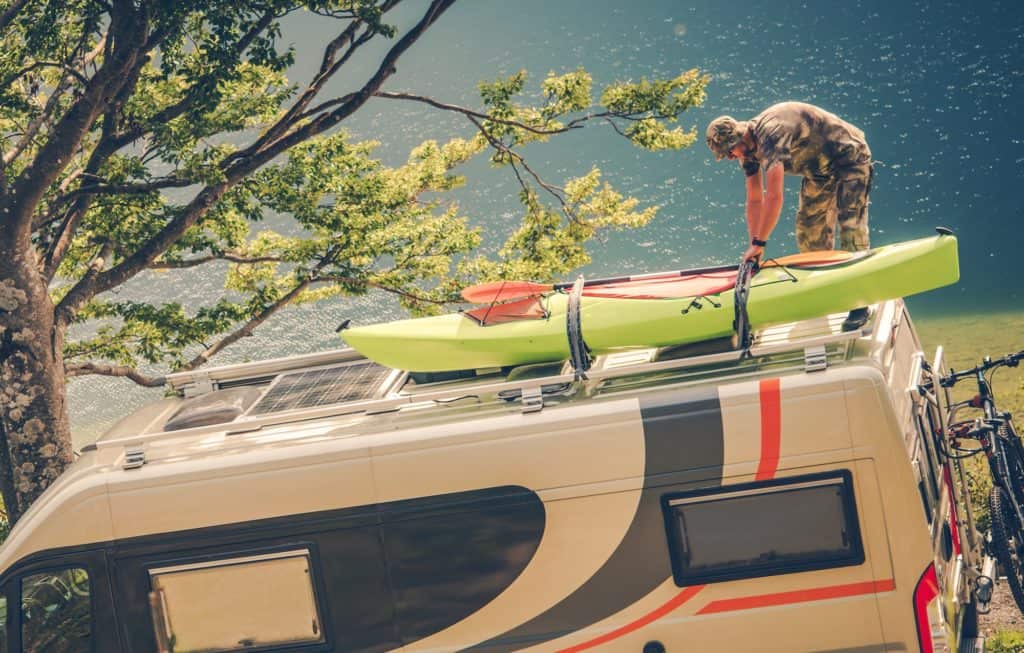
While an array of solar panels may be the first thing you see, an off-grid solar system is much more than just solar panels. You’ll also need a solar charge controller to convert the energy, a battery bank to store the power, and an inverter to use the energy. These are all essential components when it comes to a completely off-grid solar system.
A typical off-grid solar system utilizes solar panels to capture the energy from the sun and convert it to electricity. Unfortunately, without proper conditioning, the electricity from the solar panels could damage your batteries.
A solar charge controller regulates the voltage and current from the solar panels to safely store in a battery bank. The voltage of a typical battery bank is 12 volts DC (direct current). In some cases, this is adequate, but in most cases, you will also want to have 120 volt AC (alternating current) available as well.
To get 120 volts AC from your battery bank, you’ll need an inverter. An inverter converts DC power to AC power. The inverter then feeds AC power to your electrical outlets.
The solar panels you see mounted on homes, businesses, or RVs consist of many small photovoltaic cells. The photovoltaic cells are made of a semiconductor material that converts sunlight into electricity.
There are several types of solar panel options to consider when creating your off-grid solar system.
Thin-film and semi-flexible solar panels are lightweight and great options for marine and RV surfaces that are typically not flat. The flexibility of these panels enables them to conform to the curves on many boats and RVs. These are portable and flexible options but often offer lower efficiency and performance than other solar panels.
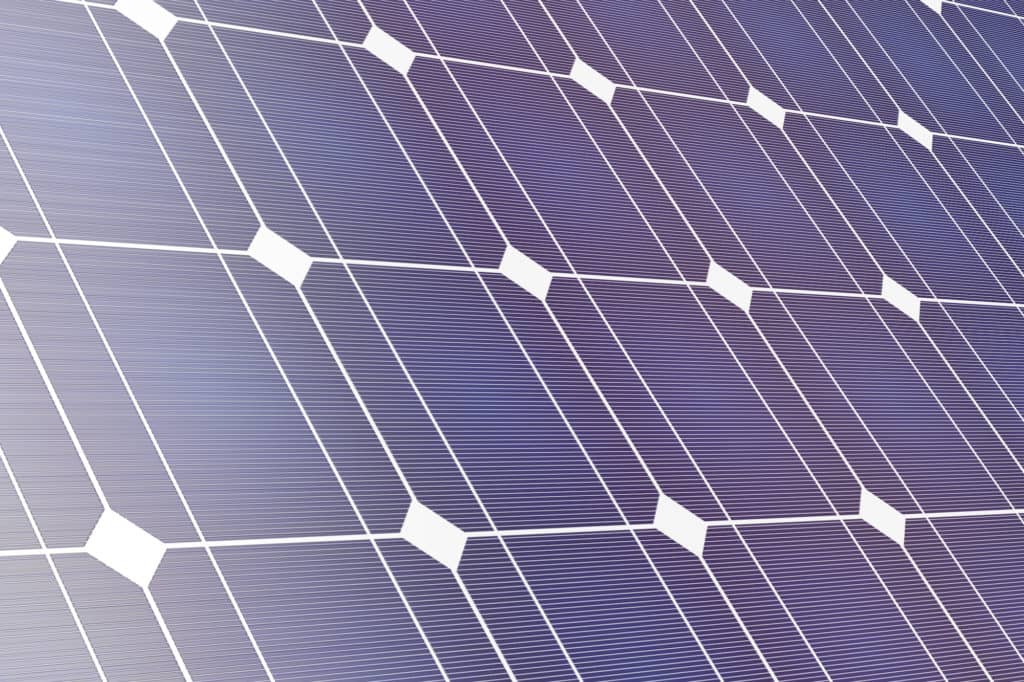
Multicrystalline and monocrystalline are other options to consider when looking at solar panels for your system. They’re similar in construction, but typically, monocrystalline solar panels are more efficient. However, a monocrystalline solar panel is typically more expensive than a multicrystalline panel. These are great options for residential or flat surfaces, whether it’s a roof or a mounting bracket in an open field or grass area.
Monocrystalline panels are the most expensive and most efficient solar panels available. They’re typically more efficient in warm weather and also in low-light conditions. If you’re looking to maximize your off-grid capabilities and efficiency, a monocrystalline solar panel will likely be your best choice.
A solar charge controller is another essential component of any off-grid solar system. The solar charge controller manages the power from the solar panels going to the battery bank.
The charge controller helps ensure batteries don’t overcharge during the day and that at night, energy doesn’t flow backward from the batteries to the panels. MPPT charge controllers are the charge controller of choice for most solar systems. MPPT charge controllers are more expensive than their Pulse Width Modulation, or PWM counterparts. However, they are far more efficient and worth the investment.
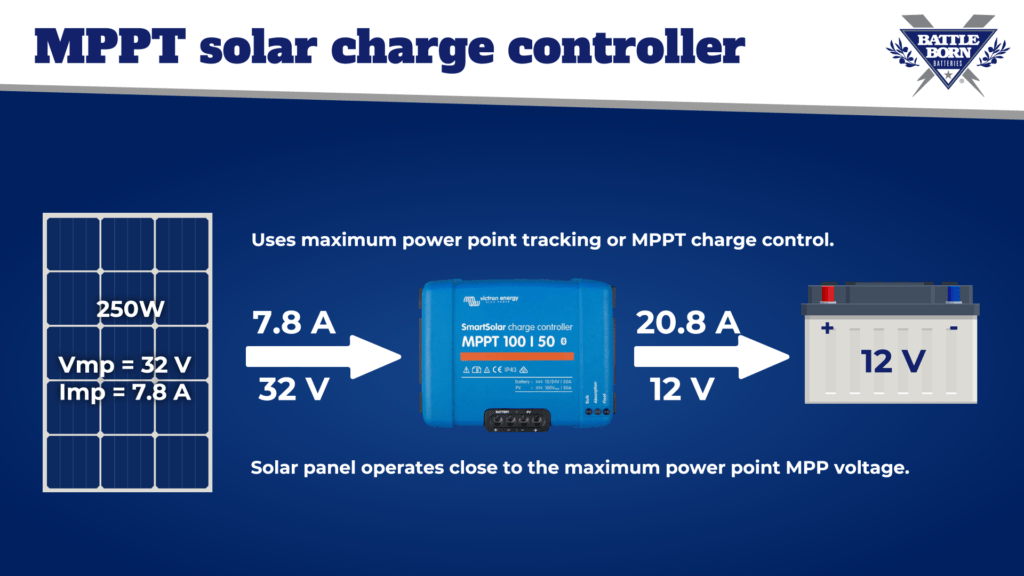
This essential component of your solar system will manage the flow of AC and DC power. Your battery bank stores DC power, but many of the appliances and electronics you use require AC power. A power inverter turns DC power to AC power.
It’s essential to purchase the proper size inverter for your needs. Inverters are sized by their power capacity, measured in watts. Determining what size inverter you need is relatively straightforward. Add up the power requirements (in watts) of all of your electronics and appliances. This will tell you how big of an inverter you need.
For example, if you plan to connect a 1,500-watt microwave, 200 watts of lights, and a 400-watt fridge to your inverter, we recommend a 3,000-watt (3 kW) inverter.

A battery bank is simply multiple batteries connected in series or parallel. The battery bank is easily the most important part of an off-grid solar setup. The batteries are where energy from the solar panels is stored.
Without the batteries, you would only be able to use your off-grid solar system during the day, assuming it’s a sunny day. Having a reliable and adequately sized battery bank allows you to utilize your off-grid solar system day or night, rain or shine.
Deep-cycle lead-acid batteries have been the most common and readily available battery option for cars, RVs, marine, and solar applications for many years. These batteries typically have a low energy density, moderate efficiency, short lifespan, and high maintenance requirements.
The main benefit of lead-acid batteries is their low upfront cost. A typical lead-acid battery will cost somewhere around $100-$350.
Despite being the most popular battery for rechargeable and starting applications, lead-acid batteries have a long list of negative qualities. They’re incredibly heavy, have a short lifespan, and require frequent maintenance. Additionally, draining a lead-acid battery below 50% of its rated capacity will cause permanent damage and decrease the already short life of the battery.
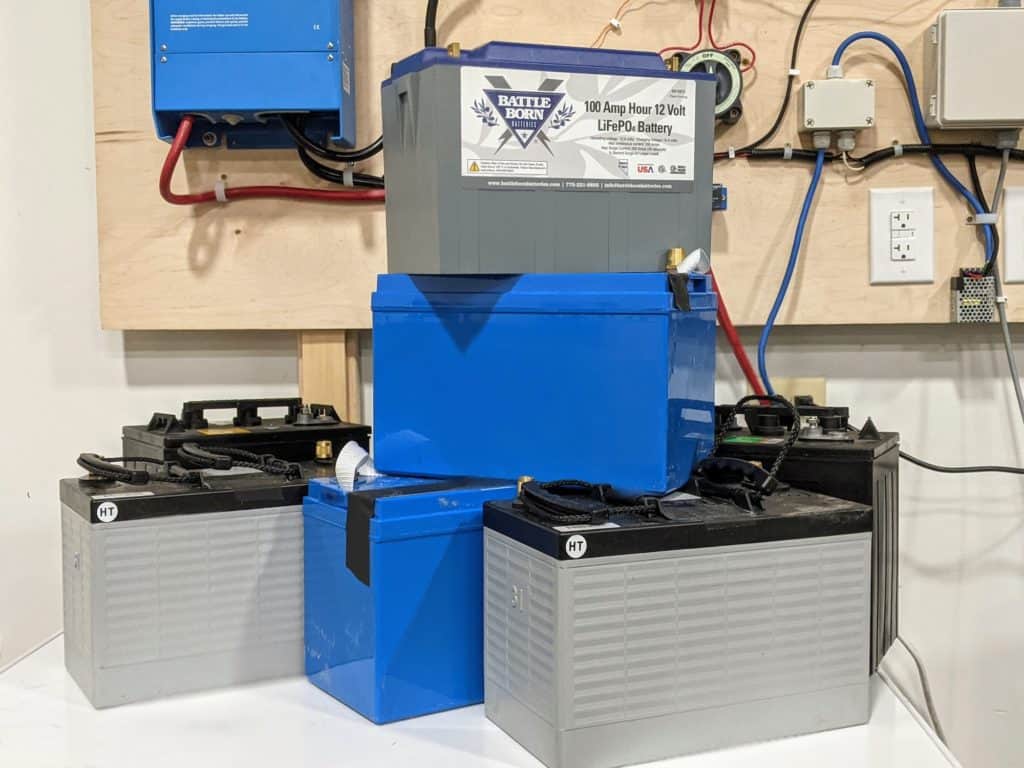
One of the growing trends in off-grid solar power systems is to use deep-cycle lithium batteries for the battery bank. Lithium batteries use lithium salt to create efficient and lightweight energy storage.
There are plenty of reasons people are making the switch to lithium batteries. For one, lithium batteries are more efficient and charge faster than lead-acid batteries. Additionally, you can use more than 80% of the rated capacity of a lithium battery without causing damage. On top of that, lithium batteries weigh about half of what their lead-acid counterparts do.
However, one of the most popular reasons people love lithium batteries is that they require no maintenance and easily last ten years or more.
Despite the long list of pros, lithium batteries aren’t perfect. The main drawback is that they’re expensive upfront cost. While a lead-acid battery can be $100-$350, a comparable lithium battery will typically cost $700-$1,200. Despite being cheaper in the long run, this massive upfront cost is often a deterrent to many.
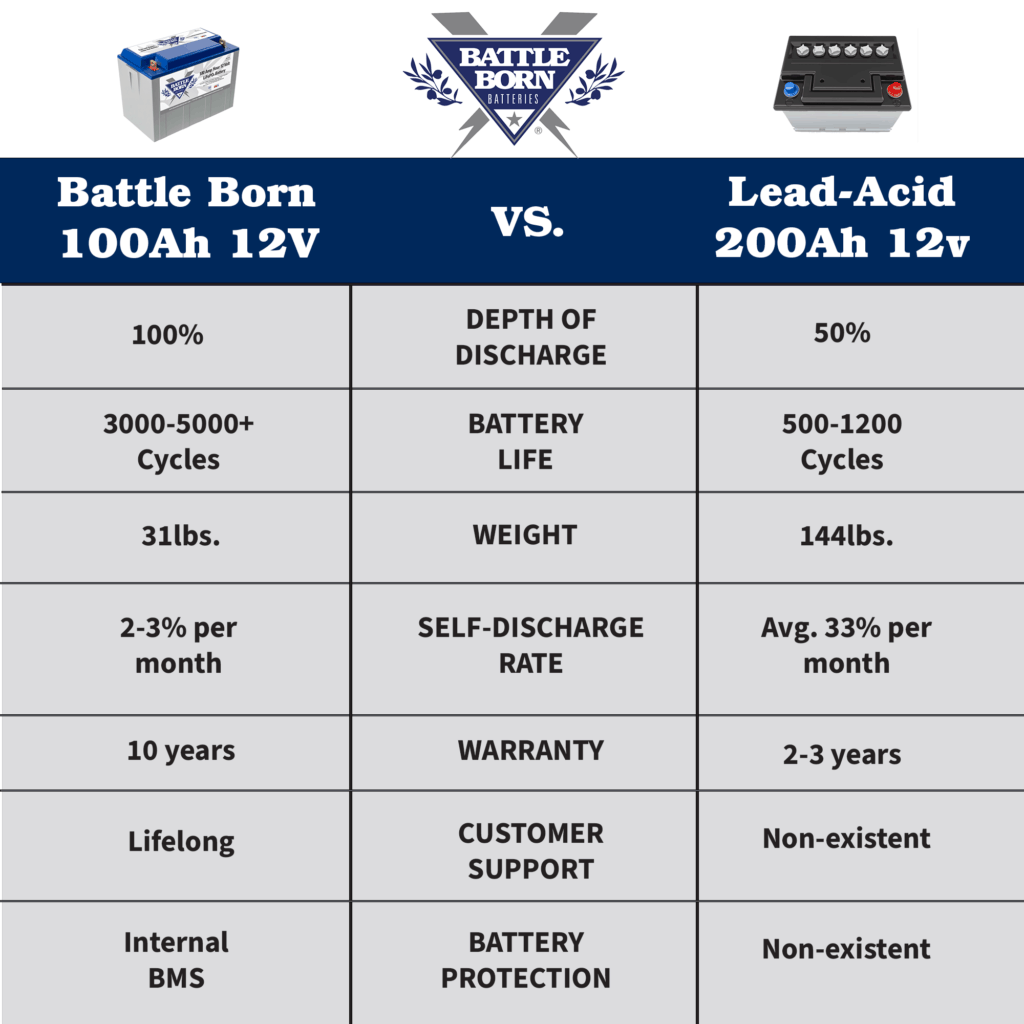
The cost of an off-grid solar system will vary depending on the size of the system. A small setup for a weekend of RVing or camping with a 100W solar panel and 100 Ah battery can run you a few hundred dollars, depending on which battery you choose. This package will be enough to keep some small electronics and lights up and running and require minimal installation.
If you want a medium-sized setup for a cabin or more extensive camping, you’ll likely want about 1,000 watts of solar panels, a 3,000-watt inverter, and a 400 Ah battery bank. This package will likely require a professional installer unless you’re handy with electricity.
The price of this system will also vary depending on if you use lithium or lead-acid batteries. For comparison, 400 Ah of lead-acid batteries could cost as much as a single lithium battery. A typical setup of this caliber could cost approximately $5,000-$10,000.
If you’re looking to live completely off-grid in a residential home, you’re looking at a pretty significant investment. These systems typically have upwards of 12,000 watts of solar panels, multiple 5,000-watt inverters, and a 1,000 to 1,200 Ah battery bank.
These systems typically cost upwards of $25,000+ and are more complex. Unless you have professional training or experience, it’s best to leave this one to the pros.
We’ve covered the major components of an off-grid system, but there’s still more equipment that you’ll need to complete your setup. Items such as a battery monitor, wiring, fuses, and distribution bars are just a few of the other components required to make your system work correctly.
Ensure each of the components in your system is rated for the size and demand of your system. Having underrated components can be dangerous and pose a fire risk. If you are unfamiliar with any of these components, be sure to seek the help of experienced and trained professionals.
An off-grid solar system is a great way to disconnect and be self-reliant. You never know when having your own source of power could prove to be beneficial. While there can be a considerable upfront cost, many are embracing solar power and loving the benefits.
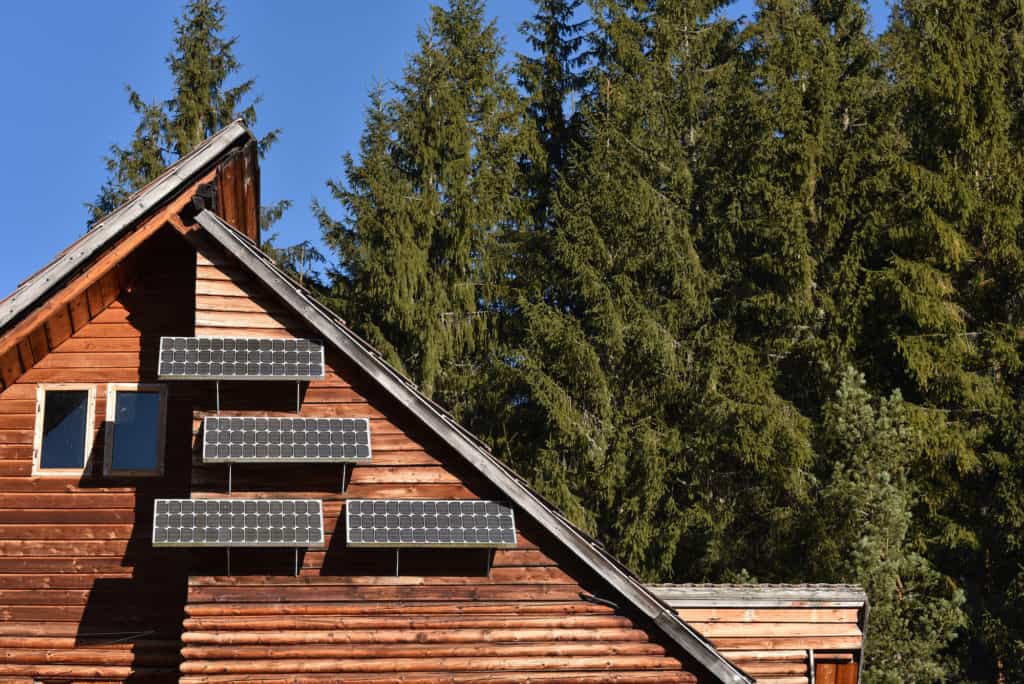
We know that building or upgrading an electrical system can be overwhelming, so we’re here to help. Our Reno, Nevada-based sales and customer service team is standing by at (855) 292-2831 to take your questions!
Also, join us on Facebook, Instagram, and YouTube to learn more about how lithium battery systems can power your lifestyle, see how others have built their systems, and gain the confidence to get out there and stay out there.
Shop Best Sellers

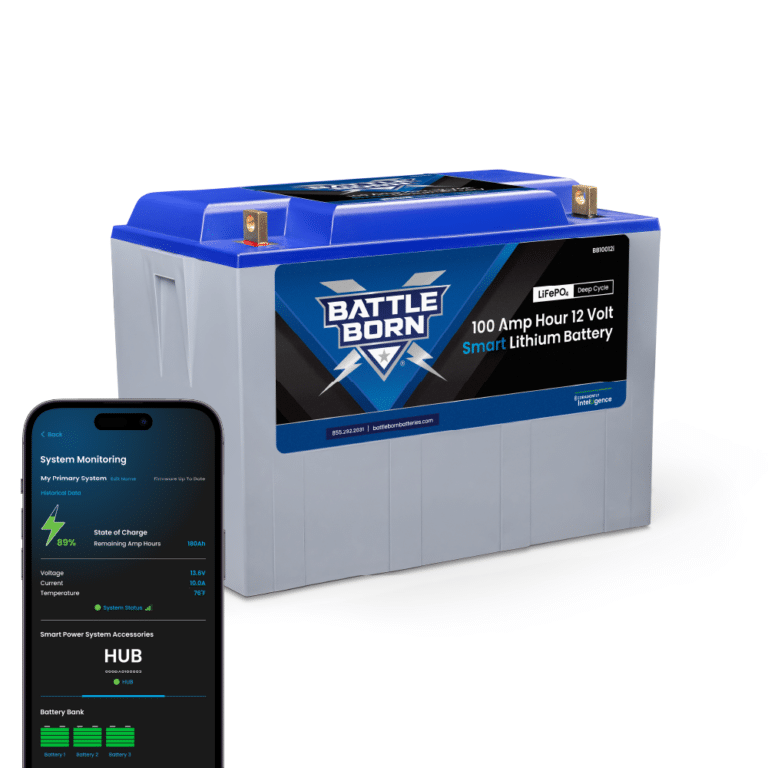

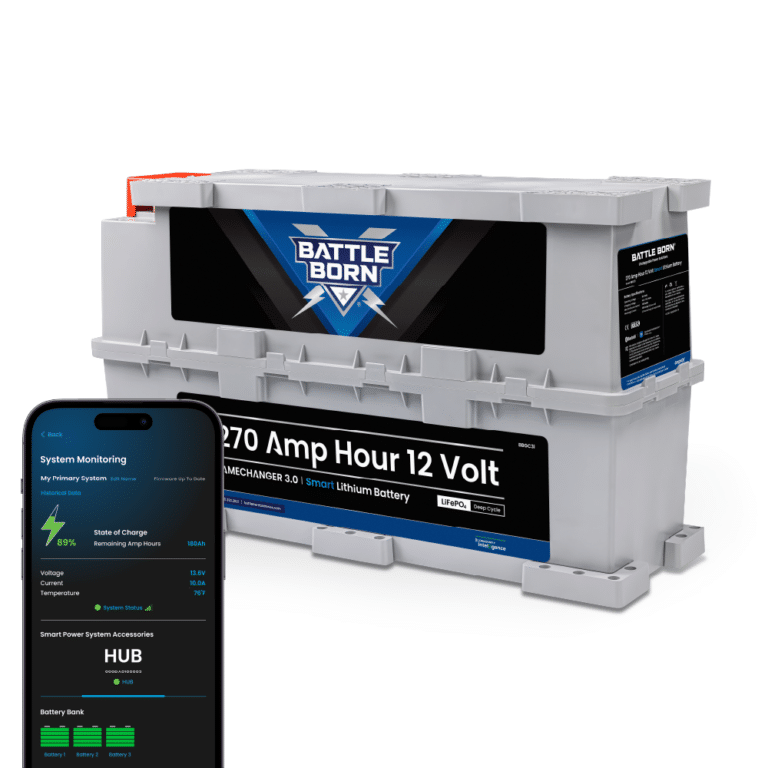




Ask a technical specialist now at 855.292.2831
Stay in the Know